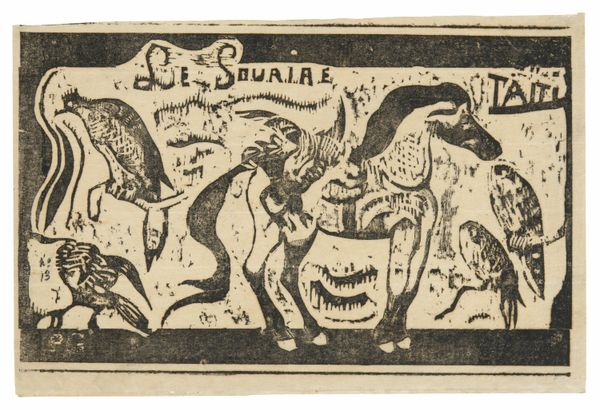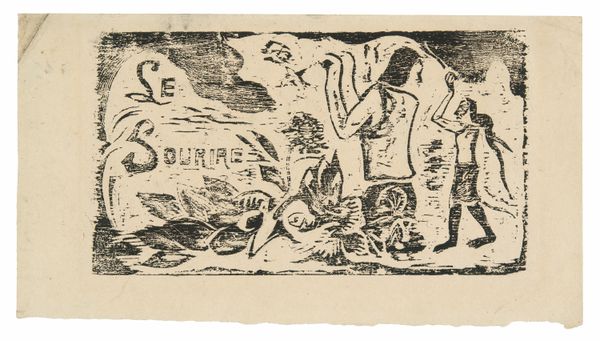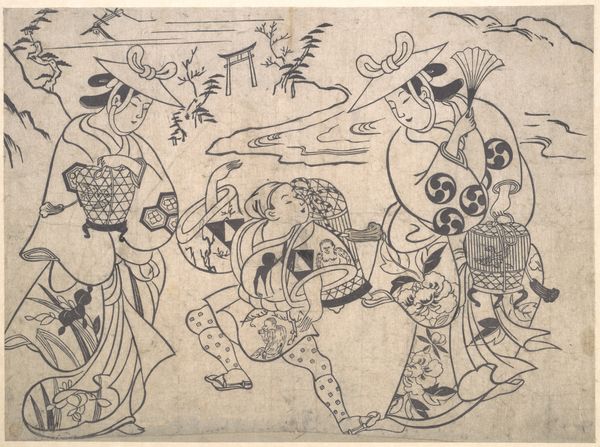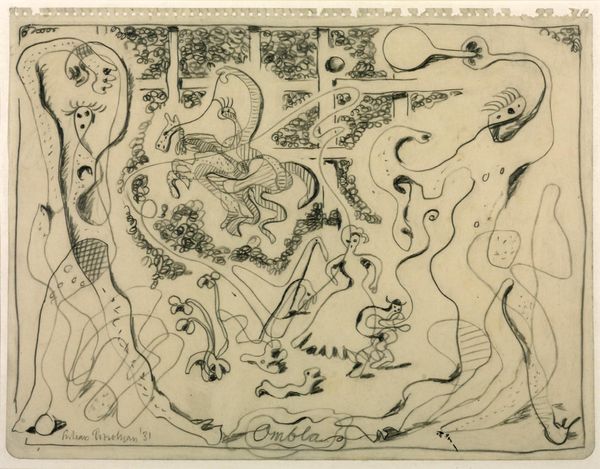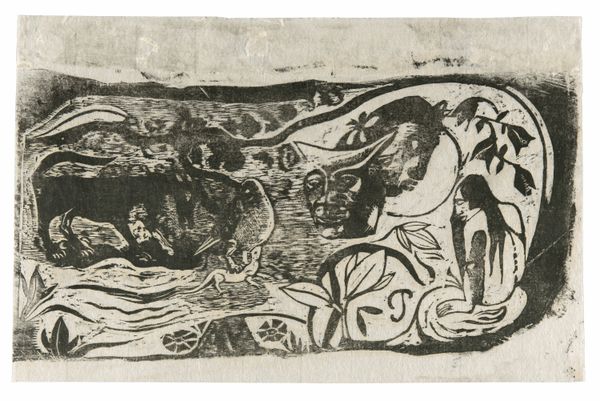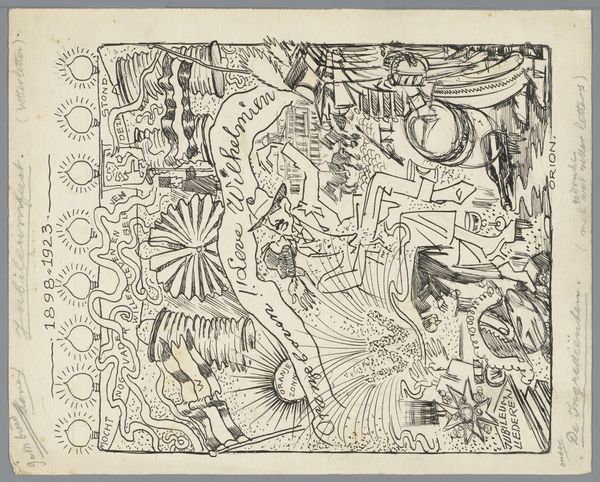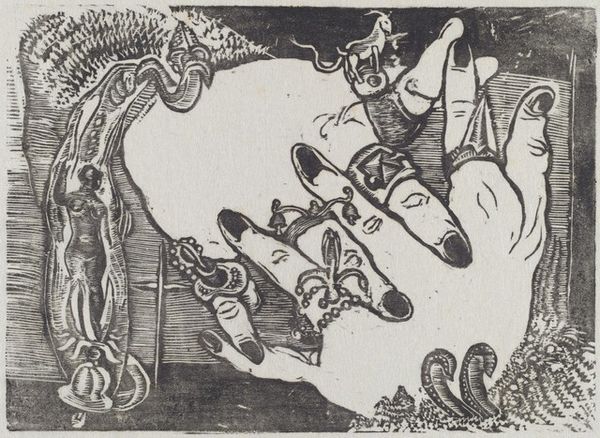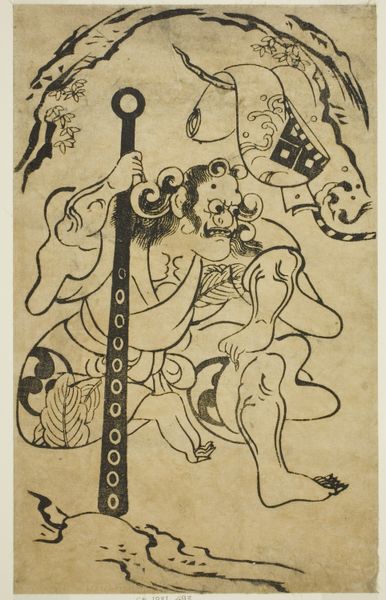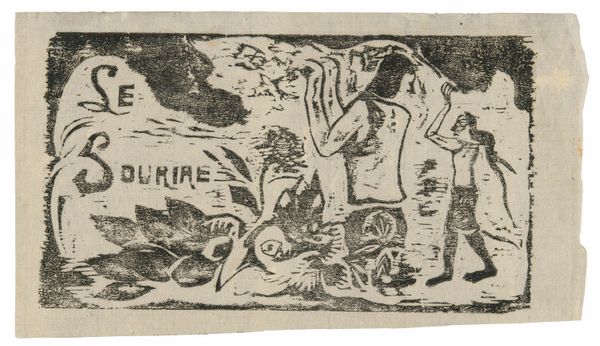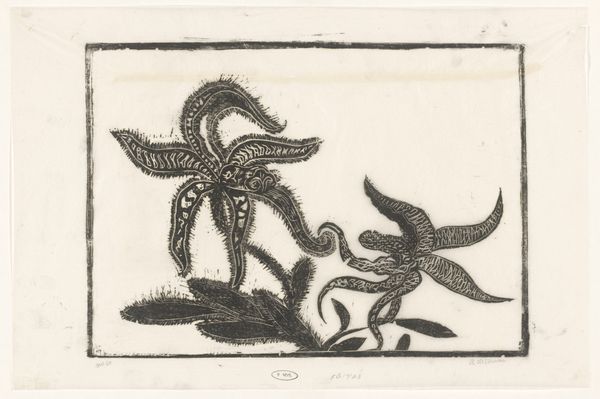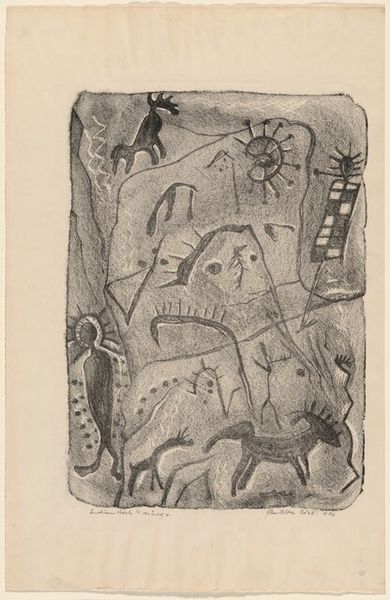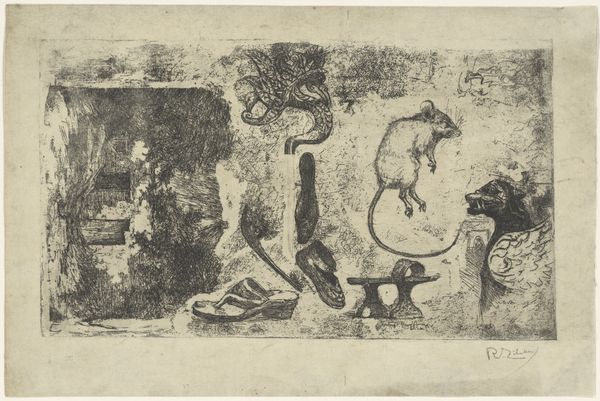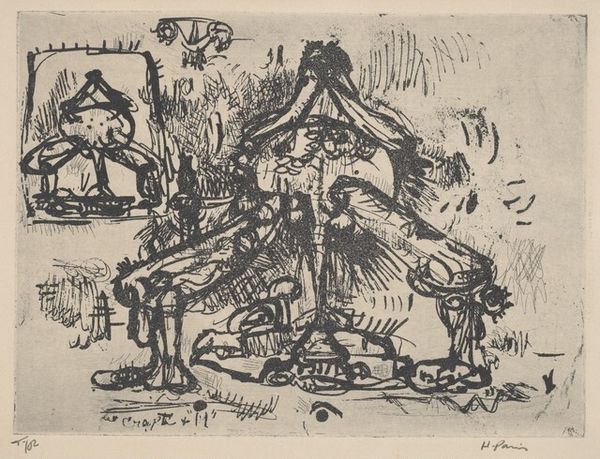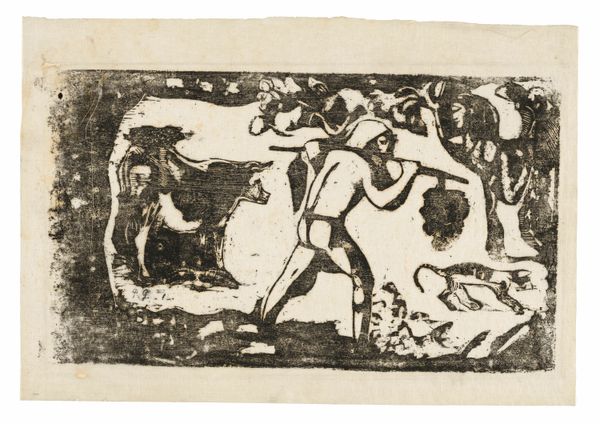
print, woodcut
#
narrative-art
# print
#
figuration
#
woodcut
#
line
#
symbolism
#
post-impressionism
Copyright: National Gallery of Art: CC0 1.0
Editor: So this is Paul Gauguin's "Title Page for 'Le Sourire'," a woodcut from 1899. The bold contrasts between the black ink and bare paper are so striking. What's interesting to you about this print, given his use of the material and production technique? Curator: I'm immediately drawn to the rough-hewn quality of the woodcut, which directly speaks to Gauguin's process. He wasn't interested in refined lines but the act of carving, the labor involved. Do you notice how the stark contrast and heavy lines flatten the image? It challenges the illusionistic space so valued by the Academy. Editor: Yes, the simplification is apparent. Also the composition looks very primal. How do the title "Le Sourire", meaning "The Smile," and the depiction of animals function together? It is interesting that it is a woodcut rather than another form of painting, especially if the magazine "Le Sourire" itself satirized political and artistic themes. Curator: I think Gauguin used the woodcut medium deliberately to undermine the established hierarchy of art forms. The accessibility of printmaking allows for wider dissemination, directly challenging elite control over artistic expression and meaning. Look closely at the animal imagery combined with text – doesn't this raise questions about how value and power operate within a society where artistic value is both celebrated and satirized? Editor: That's fascinating – I hadn't considered the medium as a challenge to authority. So, you’re saying Gauguin is using the materials and the act of production to make a statement about artistic and societal power structures? Curator: Precisely. He's implicating himself and his audience in the system he seems to critique. A smile can be deceptive. The mode of production becomes part of the message. Editor: That gives me a lot to consider. I'll never look at a woodcut the same way again! Thanks for showing me how the materiality itself communicates a complex idea. Curator: Indeed. Reflecting on the relationship between creation and context enriches our perspective on the work, I am glad we have explored it together.
Comments
No comments
Be the first to comment and join the conversation on the ultimate creative platform.
